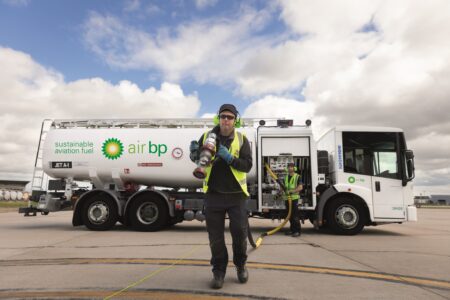Mike MacKeen, CFO of one of the largest private aviation consultancy in the USA, Private Jet Services discusses how the sector has already taken strides to reduce its environmental impact with advances in winglets, fuel-sipping engines, avionic technology, and recent advancements in hybrid, electric, and hydrogen-powered aircraft.
I believe those of us in business aviation have an opportunity, and an obligation, to lead the industry toward a more sustainable future. As a chief financial officer, I have always believed that a company’s measures of value should extend far beyond dollars and cents. The global pandemic and increasing need for climate action have strengthened this conviction.
Fortunately, the widespread adoption of environmental, social, and governance (ESG) initiatives is proof positive that a growing number of business leaders share this view.
Last year, ESG was cited in more than a quarter of Q4 2020 earnings calls from S&P 500 companies, marking a 63% increase over the previous quarter. As the calls come in this year, I suspect that figure will hit a new record. Two years ago, in the private aviation sector, it was rare for enterprise clients to include ESG criteria in requests for proposals or quotations. Now they are standard.
Capital markets have the power to play a pivotal role in the race to reach the international goal of net-zero carbon emissions by 2050. But as we face the long-term challenge of decarbonizing the economy, we cannot rely on a framework that only values short-term gains. Staying focused on sustainability requires a mindset shift and long-term strategy from leaders in every sector. There is perhaps no industry where this will be more imperative than aviation.
Chartering the path to net-zero skies
The global nature of the aviation industry presents complex political and regulatory challenges that require cooperation across the delivery chain, including equipment vendors, fuel providers and fleet operators. Aircrafts today are 70% more energy-efficient and 75% quieter than they were four decades ago, but the path toward zero-emission aviation remains an uphill climb. Slow fleet renewal cycles that can last up to 25 years constrain the pace of advancement. In addition, carbon abatement costs are still prohibitively high.
An analysis by Goldman Sachs published last month shows that aviation sits at the top of the decarbonization cost curve, with average abatement costs up to five times higher than those in agriculture and forestry or power generation.
The business aviation community has the opportunity and responsibility to lead the industry transition for our passengers. With leaner operations and lower fleet utilization than scheduled operators, private aviation leaders are in the best position to pioneer innovation, create demand for clean options, and drive down procurement costs across the industry.
Business aviation has long been at the forefront of advances in winglets, fuel-sipping engines, and avionic technology. More recently, the sector has been the testbed for hybrid, electric, and hydrogen-powered aircraft advancement. With a transition to sustainable aviation fuel (SAF) now within reach, it is more critical for business leaders to act than ever.
While SAF costs up to four times more than traditional jet fuel, lack of demand is not what is preventing its widespread adoption. The current lack of refinery and supply chain infrastructure puts SAF production on track to hit approximately 2% of the total fuel demand by 2025.
As business aviation leaders, we have a responsibility to support SAF. Capital markets provide more financing to ramp up production at scale, accelerate development, and make renewable biodiesel cost-competitive with fossil jet fuels.
One way we can facilitate investment is by offering our corporate clients additional tools to meet their ESG goals, such as programs that allow companies to offset emissions by buying clean aviation fuel for the miles they fly.
Our company is also doing its part with a carbon-neutral flight program. Private Jet Services Group has committed to offsetting carbon emissions by pledging to plant 79,200 trees in two of the nation’s most needed regions. Each year, we reconcile the reforestation program to compensate for increased flight activity, ensuring that our Carbon Neutrality Pledge is perpetually honored.
Mobilizing clean energy for the long haul
The ground transportation sector has undergone a green energy transformation at a relatively rapid pace. While the aviation industry will evolve at a slower pace, it will follow a similar process involving gradual and incremental change. Just as lighter vehicles led the evolution on the ground, business jets are well-positioned to lead the aviation evolution.
To keep the momentum moving in the right direction, business leaders must stay focused for the long haul and mobilize capital to drive long-term value. But we cannot act alone. We need policymakers at domestic and regional levels to create a combination of incentives and mandates to catalyze the existing power trains and stimulate new ones, as they did with great success in the automotive sector.
Ultimately, the promise of a sustainable future in aviation hinges on our ability to demonstrate what we value.
I believe that showing our partners, clients, and employees that we see value in being part of the solution will make our company more successful in the long run.





